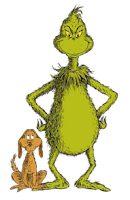(idiom: an expression used when someone does not approve of or enjoy something that other people enjoy).
December is a hectic time of year. In schools, teachers are busy finishing units and students will have several due dates to meet before the winter break. In many areas of the world, December is also the holiday season, and this can add layers of excitement, joy, and stress. Most Canadian schools organize celebrations that may include concerts, school-wide fundraising and food drives, pancake breakfasts or luncheons and holiday dress-up or spirit days. In many schools, these annual, fun, and optional celebrations have been organized for decades, and are touted as important community-builders, but are they out of touch? Recently, there has been some debate about whether public schools should scale down or eliminate these activities and exclude words like “Christmas” and “Santa” altogether.
Healthy public education is both secular and inclusive. Our public schools should reflect our diverse, multicultural communities and work thoughtfully to be sure every child sees themselves in what is taught, highlighted and celebrated. In 2019, Abacus Data reported that 87% of Canadians celebrate Christmas. An increasing number participate in Christmas as a secular event rather than a religious holiday, and 8 in 10 Canadians responded that they will decorate their homes for the holiday. Public schools should not have nativity displays nor promote religion, but it seems simplistic to ban Santa in a society where the great majority will participate in this ubiquitous ‘holiday season’. It also seems worthwhile to highlight the universal themes of helping those less fortunate, being thoughtful and giving, spending time with friends and family, and sharing a meal together.
Recognizing and celebrating our diversity are very important, and strengthening the Canadian mosaic should be an additive process. This is unlikely to be accomplished by eliminating traditions and celebrations important to many Canadians. First Nations, Inuit and Métis Peoples have long hosted feasts, dances and ceremonies around Winter Solstice, and many Indigenous communities have fused these with Christmas celebrations. We should also understand that when people gather around a fire, or beside a decorated evergreen tree, holly and mistletoe; enjoy a winter feast and merriment, and participate in gift giving, they are taking part in pagan Yule traditions that stretch back thousands of years — long before the story of Christianity. Our schools must continue to teach and increase visibility for Kwanzaa, Hanukkah, Yom Kippur, Lunar or Chinese New Year, Black History Month, Ramadan, Eid al-Adha, Diwali, Vaisakhi, National Indigenous Peoples Day and other cultural celebrations connected to the local community. We should also understand that several are deeply connected to different faiths. All are important to help us understand, include and unite Canadians and strengthen our sense of community. While examining traditions is a very healthy exercise, not allowing a Christmas tree and Santa Claus seems misguided. This too is us.
Season’s Greetings. Happy Holidays. Happy Quviasukvik. Happy Yule. Merry Christmas. Chag Sameach. Happy Kwanzaa. Happy New Year!
p.s. Spoiler alert - Santa is not real, but has survived a few hundred years as an idea. Santa Claus is a blend of pre-Christian paganism, Christian influence and a whole lot of modern, secular myth-making. Santa was influenced by the Norse god Odin from 2 BCE. A wise, white-bearded spirit who flew the skies on an 8-legged steed with sleigh. Crafty, gift making elves were also prominent in Norse mythology. Later, 4th century folklore traditions revered Saint Nicholas from Greece. Nicholas was known for his generous gifts to the poor. In the late 1700s in the Netherlands and other nations, Sinterklaas placed sweets and small gifts in children's shoes on December 6. Different names, iterations, dates and traditions can be found around the world. Thanks to the creative interpretations of many 19th and 20th century authors, poets, artists and marketing specialists, in North America Santa has morphed into a jolly old elf in a red suit who lives at the North Pole and brings presents to all the world’s children, while filled with mirth and “laughing all the way”. The latter not a bad way to approach life in our world today.
p.p.s. School communities are different and context is important. The conversations about and planning of school events should ideally include a widely representative group of students, staff and parents. Whether 'Breakfast with Santa', 'Chinese New Year', 'K-Pop contest' or a 'Baisakhi Bhangra Festival', everyone should feel welcome, and all make us better.


No comments:
Post a Comment
Thank you for commenting - I genuinely appreciate everyone who reads and provides feedback. 🤗